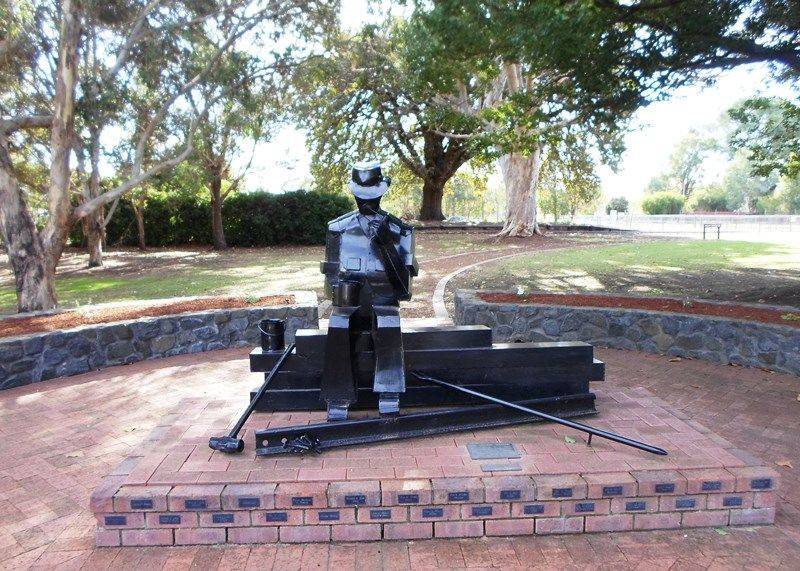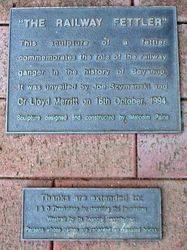
Home » Themes » Technology » Industry
The Railway Fettler Print Page 
The sculpture "The Railway Fettler" commemorates the role of the railway ganger in the history of the town. The foundation on which the sculpture sits was donated by the local people. Those who donated are named on the bricks.
Boyanup is an Noongar Aboriginal name, said to mean "a place of quartz" as "Boya" means "rock" or "stone". The name was first recorded by an explorer in 1852, and a road survey in 1869 shows the town name as "Boyinup". In 1888 a railway was built between Boyanup and Bunbury, and the townsite was gazetted in 1894.
Location
| Address: | Boyanup - Picton Road (Bridge Street), Fettlers Park , Boyanup, 6237 |
|---|---|
| State: | WA |
| Area: | AUS |
| GPS Coordinates: | Lat: -33.48089 Long: 115.730731 Note: GPS Coordinates are approximate. |
Details
| Monument Type: | Sculpture |
|---|---|
| Monument Theme: | Technology |
| Sub-Theme: | Industry |
| Designer: | Malcolm Paine |
| Artist: | Malcolm Paine |
Dedication
| Actual Monument Dedication Date: | Sunday 16th October, 1994 |
|---|
"The Railway Fettler"
This sculpture of a fettler commemorates the role of the railway ganger in the history of Boyanup.
It was unveiled by Joe Szymansku and Cr Lloyd Merritt on 16th October, 1994.
Sculpture designed and constructed by Malcolm Paine
Thanks are extended to :
I & D Theakstone for donating the foundation
Westrail for its financial contribution
Persons whose names are recorded on donated bricks






